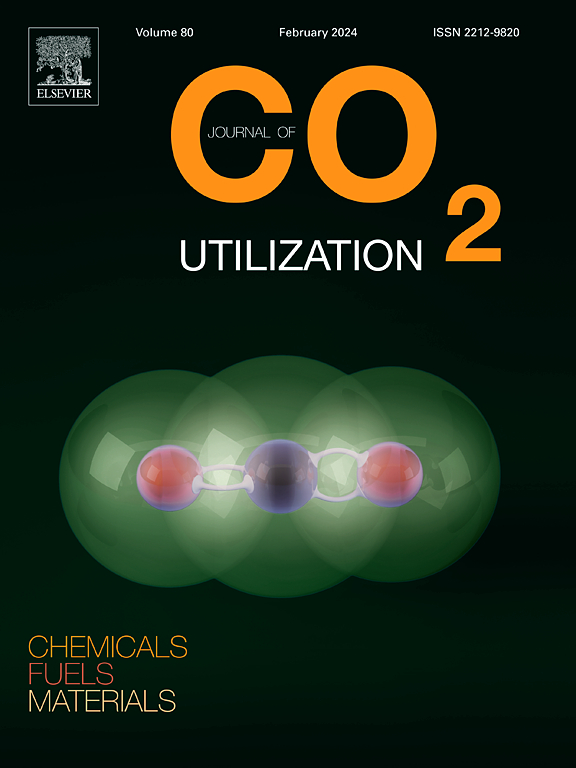钢-聚丙烯混杂纤维高性能水泥基复合材料:力学性能、微观机理和碳排放评价
IF 7.2
2区 工程技术
Q1 CHEMISTRY, MULTIDISCIPLINARY
引用次数: 0
摘要
克服钢纤维增强高性能胶凝复合材料(SF/HPCC)混合困难、自重、成本高、碳排放高的问题。选择聚丙烯纤维(PPF)等量替代钢纤维(SF),探讨PPF替代率对SF-PPF/HPCC的和易性、抗压强度和劈裂抗拉强度的影响规律,揭示PPF替代率对SF-PPF/HPCC力学性能的影响机理。最后,对SF-PPF/HPCC的碳排放和经济分析进行了评价。结果表明,PPF替换SF-PPF / HPCC的科幻改善和易性,SP0相比,SP10, SP15, SP20, SP30,和SP40 %显示增加了4.34,6.52 % 10.87 %, % 13.04和13.04 %在衰退,和增加1.25 %,2.5 % 5 % 6.25 %,分别和7.5 %衰退流。力学性能方面,当PPF用量为20 % (SP20)时,其抗压强度比SP0降低6.54 %,劈裂抗拉强度比SP0提高16.82 %。从微观形貌和微观参数的定量分析来看,PPF取代率的增加削弱了SF的切割效果,使颗粒趋于拉长,孔径增大。而PPF与SF的合理共混可以使SF-PPF/HPCC的颗粒和孔隙尺寸趋于细密,改善其宏观性能。以PPF替代顺丰可减少CO2排放,降低CO2排放的社会成本,降低顺丰-PPF/HPCC的生产成本,是实现低碳低成本生产的有效策略,对促进其在工程领域的应用具有重要意义。本文章由计算机程序翻译,如有差异,请以英文原文为准。
Steel-polypropylene hybrid fiber high performance cement-based composites: Mechanical properties, microscopic mechanisms, and carbon emission evaluation
To overcome the problems of steel fiber reinforced high performance cementitious composites (SF/HPCC), such as mixing difficulties, self-weight, high cost and high carbon emissions. The polypropylene fiber (PPF) was selected to substitute steel fiber (SF) in equal volume to explore the rule of PPF replacement rate on workability, compressive strength and split tensile strength of SF-PPF/HPCC, and the mechanism of the effect of the substitution ratio of PPF for SF on the mechanical properties of SF-PPF/HPCC was revealed. Finally, the carbon emission and economic analysis of SF-PPF/HPCC were evaluated. The results showed that PPF substitution of SF improves the workability of SF-PPF/HPCC, Compared to SP0, the SP10, SP15, SP20, SP30, and SP40 showed an increase of 4.34 %, 6.52 %, 10.87 %, 13.04 %, and 13.04 % in slump, and an increase of 1.25 %, 2.5 %, 5 %, 6.25 %, and 7.5 % in slump flow, respectively. For the mechanical properties, when the replacement of SF by PPF was 20 % (SP20), the compressive strength decreased by 6.54 % and the splitting tensile strength increased by 16.82 % compared with SP0. From the quantitative analysis of microscopic morphology and microscopic parameters, the increase of the substitution rate of PPF weakened the cutting effect of SF, so that the particles tended to be elongated and the pore size increased. However, the reasonable blending of PPF and SF can make the size of particle and pore tend to be fine and improve the macroscopic properties of SF-PPF/HPCC. Replacing SF with PPF can reduce CO2 emission, lower the social cost of CO2 emission, and lower the production cost of SF-PPF/HPCC, which was an effective strategy to achieve low-carbon and low-cost production, and was of great significance to promote its application in the engineering field.
求助全文
通过发布文献求助,成功后即可免费获取论文全文。
去求助
来源期刊

Journal of CO2 Utilization
CHEMISTRY, MULTIDISCIPLINARY-ENGINEERING, CHEMICAL
CiteScore
13.90
自引率
10.40%
发文量
406
审稿时长
2.8 months
期刊介绍:
The Journal of CO2 Utilization offers a single, multi-disciplinary, scholarly platform for the exchange of novel research in the field of CO2 re-use for scientists and engineers in chemicals, fuels and materials.
The emphasis is on the dissemination of leading-edge research from basic science to the development of new processes, technologies and applications.
The Journal of CO2 Utilization publishes original peer-reviewed research papers, reviews, and short communications, including experimental and theoretical work, and analytical models and simulations.
 求助内容:
求助内容: 应助结果提醒方式:
应助结果提醒方式:


